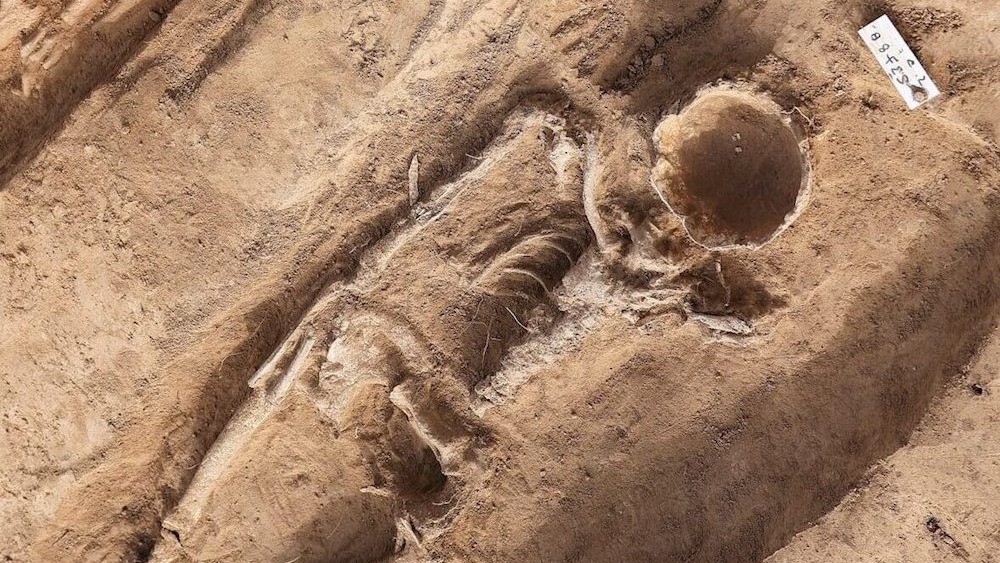1,000-year-old skeleton of noblewoman with hollowed-out skull found buried next to 'husband' in Germany
Archaeologists in Germany unearthed a male skeleton and a female skeleton. One was missing a significant chunk of the skull.

The skeletal remains of a man and a woman buried in Germany caught archaeologists off guard when they discovered that the skull of one of the skeletons was completely hollowed out.
Archaeologists made the unusual finding during ongoing excavations near a 1,000-year-old former royal palace built by Roman Emperor Otto the Great (also known as Otto I) in Helfta, a village in the German state of Saxony-Anhalt.
The two skeletons were buried directly next to each other, suggesting that they were "possibly a married couple," Oliver Dietrich, an archaeologist with the German Archaeological Institute in Berlin who worked on the excavation, told Live Science in an email.
The woman was slightly shorter than the man, and she would have stood 5 feet 1 inch tall (1.55 meters), according to the German outlet Bild.
But what was most alarming to researchers was that her skeleton was missing facial bones. However further analysis revealed that her skull wasn't actually scooped out. Rather, it was damaged later because the grave was shallow, and located directly beneath the soil layer.
Related: Skeleton with 4 prosthetic metal fingers unearthed from centuries-old grave in Germany
"The woman's skull was damaged by subsequent disturbances to the grave, for example by [a] plow or perhaps also by small animals that had built their burrows in the grave," Felix Biermann, an archaeology professor at the University of Szczecin in Poland who worked on the excavation, told Live Science in an email. "So, there is nothing spectacular about it."
Sign up for the Live Science daily newsletter now
Get the world’s most fascinating discoveries delivered straight to your inbox.
The man was buried with an assortment of grave goods, including iron objects, like a knife; a belt set (a buckle and tongue strap); and the iron tip of a staff, signaling that he may have been a noble figure at the time of his death.
"We conclude that this man lived in the 9th century A.D. and was an official in the Frankish castle or hillfort that existed there at the time," Biermann said. "As he had no weapons with him, he was probably more of an official than a warrior."
The woman's grave, on the other hand, lacked burial items, which could mean it was either robbed at some point in time or she was a convert to Christianity.
"It is not easy to say why the woman had no grave goods," Biermann said. "It is possible that her grave was later robbed."
He added, "but I think it is more likely that she or the people who buried her were already more Christian than the man. The two of them lived at a time when Christianity was slowly gaining acceptance, and in this case the decision not to provide burial objects could express a turn toward Christianity, while the provision of burial objects could express a more traditional attitude."
Archaeologists are conducting further analysis to learn more about the identities of the pair and how the individuals may have died.
Jennifer Nalewicki is former Live Science staff writer and Salt Lake City-based journalist whose work has been featured in The New York Times, Smithsonian Magazine, Scientific American, Popular Mechanics and more. She covers several science topics from planet Earth to paleontology and archaeology to health and culture. Prior to freelancing, Jennifer held an Editor role at Time Inc. Jennifer has a bachelor's degree in Journalism from The University of Texas at Austin.









